stress & anxiety support
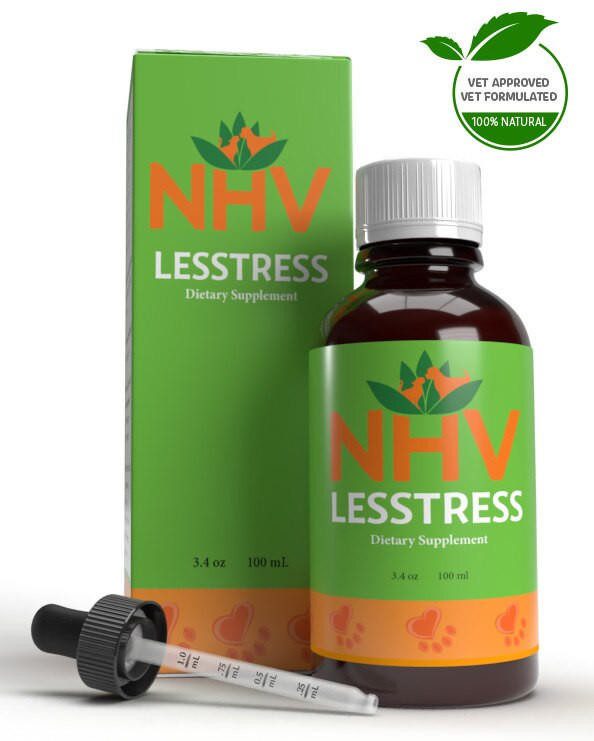
free shipping over $100 (USA & Canada)
1-877-937-4372 the pet expert hotline

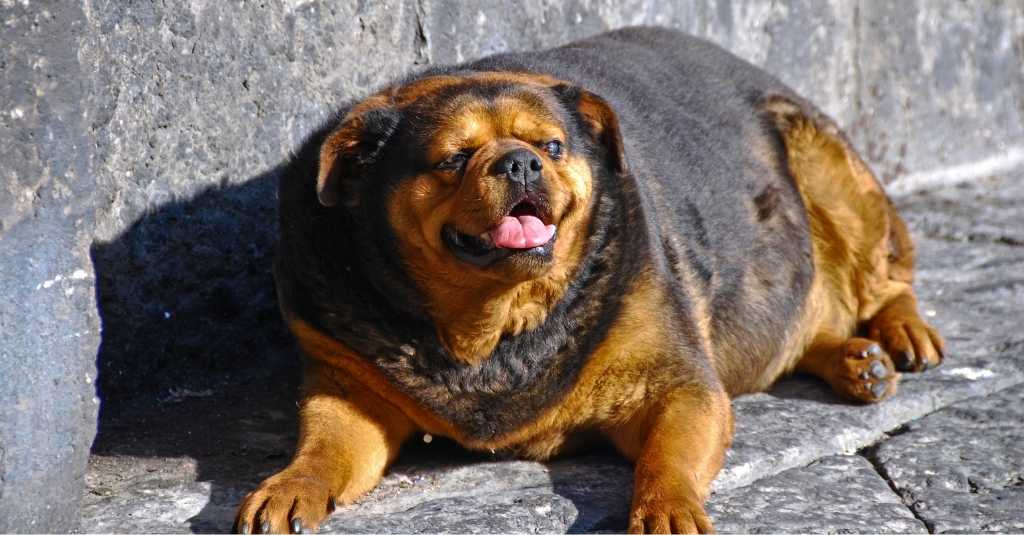
Obesity is a growing problem in the veterinary world. In a clinical survey conducted by the Association for Pet Obesity Prevention (APOP), “56% of dogs and 60% of cats were classified as clinically overweight. That equals an estimated 50.2 million dogs and 56.5 million cats are too heavy.” Unfortunately, because of this, many pet owners are so used to seeing overweight pets, that it has become the new ‘normal’ and healthy weight pets are seen as too thin.
The main factor causing obesity in animals is overfeeding.
The main factor causing obesity in animals is overfeeding, meaning energy intake exceeds energy expenditure. Feeding calorically dense, highly palatable, high-fat diets and free-choice feeding increases the risk of obesity. Other factors that may cause obesity are hormonal problems and stress. For example, spaying/neutering can play a role in obesity because it changes the hormonal activity in the animal. Hypothyroidism (low thyroid levels) and hyperadrenocorticism (high blood cortisone levels) are also associated with obesity. Just like people, pets can be ‘stress eaters’ too! Stresses such as lack of physical activity, loneliness, or change in the environment can cause pets to eat more and become obese.
Pets that are obese have excessive fat accumulation around the neck, over the tail-head, along the underside, and in the abdominal cavity. They may also have difficulty moving or breathing, exercise intolerance, urinary or fecal incontinence, unkempt appearance, and pressure sores.
Obesity in pets is generally measured by the “Body Condition Score” (BCS). This scale is either rated out of 5 or out of 9 with a BCS of 5/5 or 9/9 being extremely or morbidly obese. The ideal BCS of pets is 3/5 or 5/9
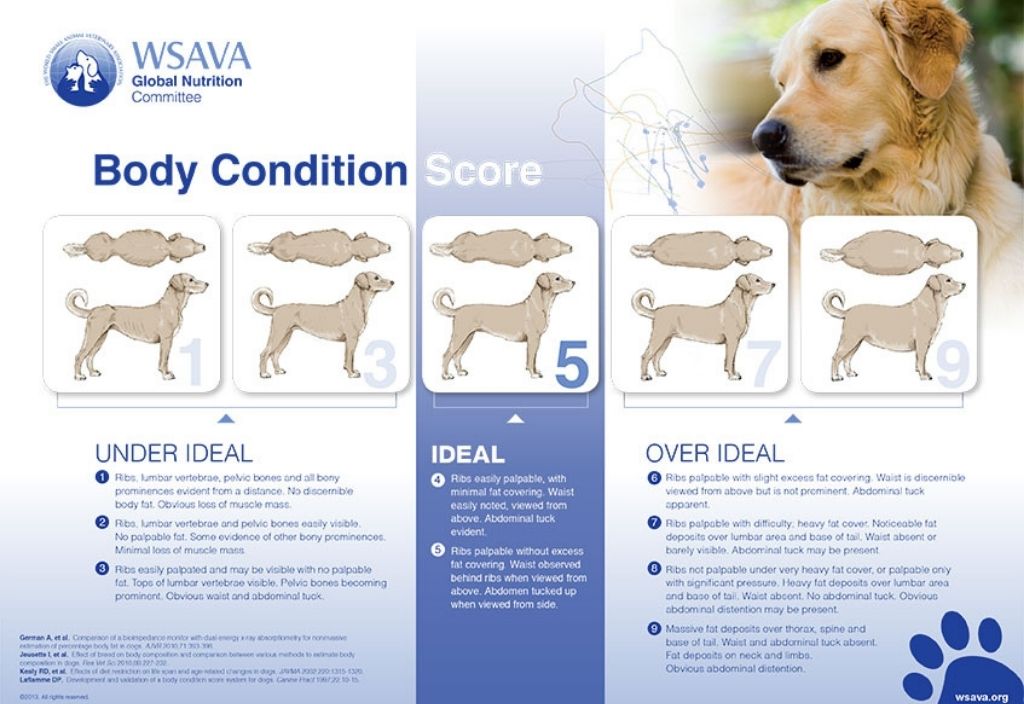
If a pet is eating an appropriate diet and amount but is still obese, tests can rule out certain causes. Dogs can be tested for hypothyroidism and Cushing’s disease and cats can be tested for liver disease and diabetes.
It is in your pet’s best interest to remain a healthy weight. If you are having difficulty guiding your pet through their weight loss journey, NHV can help. Our pet experts can provide a nutritional assessment and even formulate a custom diet recipe that focuses on healthy weight loss.
stress & anxiety support

Natural Support for Canine Stress and Anxiety
buy 2 and save $3
3 month supply for a small to medium size pet
Everyone knows what stress feels like, and we all know that too much stress can make us ill—high blood pressure, ulcers and even cancer can result from excessive stress. Like us, dogs can get stressed by numerous factors as well. Help your furkiddo relax into a long and happy life with NHV Lesstress - a natural dog stress support.

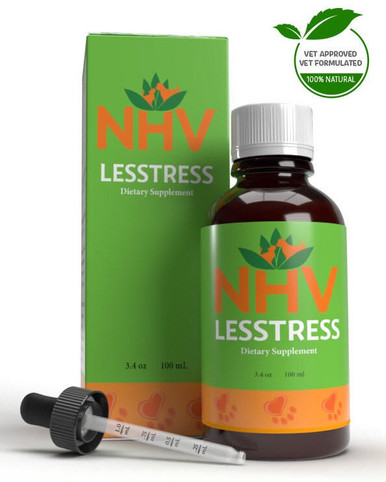
Everyone knows what stress feels like, and we all know that too much stress can make us ill—high blood pressure, ulcers and even cancer can result from excessive stress. Like us, dogs can get stressed by numerous factors as well. Help your furkiddo relax into a long and happy life with NHV Lesstress - a natural dog stress support.

Natural Dog Stress Reliever Supplemental Support
With a heightened sense of hearing and smell, small events that seem mundane to us can be terrifying and stressful for your dogs. Sometimes the stress is from the ride to the office, or maybe they are missing their human companions. This all contributes to changes in behavior like excessive panting, drooling, sweaty paws, dilated eyes, pacing, excessively shedding, or just completely shutting down. Some dogs become so stressed that it may lead to fear and aggression.
Other forms of stress in a dog’s life include:
In addition to panting, excessive barking/whining, chewing on themselves, shivering (when it’s not cold), panicked tail wagging, or tense muscles, stress can also cause GI tract issues such as diarrhea or vomiting.
The key to a healthy pup is balance. Too much or too little activity can be harmful, as well as too much or too little socialization. A balanced, clean diet also helps maintain the body and the mind. If your dog is susceptible to stress, you can use calming herbs like those found in NHV Lesstress. This formulation gently acts on the nervous system and immune system to provide a natural dog stress reliever.
How NHV’s Natural Dog Stress Relief Eases Stress and Anxiety
For stressful experiences such as separation anxiety, the loss or addition of a furry friend, special events (eg. fireworks) and illness (stress can cause conditions to worsen), the natural (non-addictive) sedative properties of Lesstress gently relax the nervous system and endocrine system. Ingredients like Chamomile, Passion Flower and Lemon Balm work to calm nerves while ingredients like Reishi, Eleuthero, and Echinacea Angustifolia are very beneficial for helping the body adapt to stress and illness and stimulate healthy immune function.
Help Support Your Dog Naturally
All NHV supplements like Lesstress are 100% natural and created by a holistic veterinarian and a master herbalist, specially formulated for pets. Feel free to contact our veterinary professionals to get more insight into your little one’s health and wellbeing.
Made with the finest, organically grown, or ethically harvested herbs. Made specifically for pets, vet-formulated and vet approved.
Lesstress for Dogs
Select your pet's weight to determine the correct dose.
To be taken twice daily. Determine your pet’s weight and then use the easy chart below to determine the correct dose. This is the minimum dosage.
Pet's Weight Dosage
0 - 15 lb = 0.5 ml
16 - 30 lb = 1.0 ml
31 - 45 lb = 1.5 ml
46 - 60 lb = 2.0 ml
61 - 75 lb = 2.5 ml
Over 75 lb = 3.0 ml
For small animals (rabbits, ferrets), avians and reptiles use 1 drop for every 2 lb of body weight.
How to Administer
Shake well before use.
The easiest method is to use the dropper provide and places the drops into your pet’s food or favorite treat. You can also use the dropper and squirt directly into the pet’s mouth.
Some pets can be finicky, if this occurs consider hiding the drops in foods most pet’s love such as fish, chicken or yogurt or a favourite treat. If your pet only eats dry food then soak a few kibbles at feeding time.
For Best Results
Herbal dietary supplements are beneficial to the health and wellbeing of your pet and are safe for long-term use. Every pet responds to natural herbal supplements differently, therefore it is important to be consistent and administer the product daily. Supplements generally take two to four weeks to take effect, however this will vary from one animal to the next.
Product Storage
All NHV Natural Pet Products are pure herbal extracts and contain no artificial additives, preservatives or coloring. Shelf life after opening is 6 months and must be refrigerated after opening.
Cautions and Contraindications
Do not use Lesstress in pregnant or nursing animals.
Speak to your vet before using our products. A second visit is recommended if your pet’s condition does not improve, or deteriorates after continued use of the supplements.
All information provided by NHV Natural Pet Products is for educational purposes only.
Natural Dog Stress Reliever Supplemental Support
With a heightened sense of hearing and smell, small events that seem mundane to us can be terrifying and stressful for your dogs. Sometimes the stress is from the ride to the office, or maybe they are missing their human companions. This all contributes to changes in behavior like excessive panting, drooling, sweaty paws, dilated eyes, pacing, excessively shedding, or just completely shutting down. Some dogs become so stressed that it may lead to fear and aggression.
Other forms of stress in a dog’s life include:
In addition to panting, excessive barking/whining, chewing on themselves, shivering (when it’s not cold), panicked tail wagging, or tense muscles, stress can also cause GI tract issues such as diarrhea or vomiting.
The key to a healthy pup is balance. Too much or too little activity can be harmful, as well as too much or too little socialization. A balanced, clean diet also helps maintain the body and the mind. If your dog is susceptible to stress, you can use calming herbs like those found in NHV Lesstress. This formulation gently acts on the nervous system and immune system to provide a natural dog stress reliever.
How NHV’s Natural Dog Stress Relief Eases Stress and Anxiety
For stressful experiences such as separation anxiety, the loss or addition of a furry friend, special events (eg. fireworks) and illness (stress can cause conditions to worsen), the natural (non-addictive) sedative properties of Lesstress gently relax the nervous system and endocrine system. Ingredients like Chamomile, Passion Flower and Lemon Balm work to calm nerves while ingredients like Reishi, Eleuthero, and Echinacea Angustifolia are very beneficial for helping the body adapt to stress and illness and stimulate healthy immune function.
Help Support Your Dog Naturally
All NHV supplements like Lesstress are 100% natural and created by a holistic veterinarian and a master herbalist, specially formulated for pets. Feel free to contact our veterinary professionals to get more insight into your little one’s health and wellbeing.
Made with the finest, organically grown, or ethically harvested herbs. Made specifically for pets, vet-formulated and vet approved.
Lesstress for Dogs
Select your pet's weight to determine the correct dose.
To be taken twice daily. Determine your pet’s weight and then use the easy chart below to determine the correct dose. This is the minimum dosage.
Pet's Weight Dosage
0 - 15 lb = 0.5 ml
16 - 30 lb = 1.0 ml
31 - 45 lb = 1.5 ml
46 - 60 lb = 2.0 ml
61 - 75 lb = 2.5 ml
Over 75 lb = 3.0 ml
For small animals (rabbits, ferrets), avians and reptiles use 1 drop for every 2 lb of body weight.
How to Administer
Shake well before use.
The easiest method is to use the dropper provide and places the drops into your pet’s food or favorite treat. You can also use the dropper and squirt directly into the pet’s mouth.
Some pets can be finicky, if this occurs consider hiding the drops in foods most pet’s love such as fish, chicken or yogurt or a favourite treat. If your pet only eats dry food then soak a few kibbles at feeding time.
For Best Results
Herbal dietary supplements are beneficial to the health and wellbeing of your pet and are safe for long-term use. Every pet responds to natural herbal supplements differently, therefore it is important to be consistent and administer the product daily. Supplements generally take two to four weeks to take effect, however this will vary from one animal to the next.
Product Storage
All NHV Natural Pet Products are pure herbal extracts and contain no artificial additives, preservatives or coloring. Shelf life after opening is 6 months and must be refrigerated after opening.
Cautions and Contraindications
Do not use Lesstress in pregnant or nursing animals.
Speak to your vet before using our products. A second visit is recommended if your pet’s condition does not improve, or deteriorates after continued use of the supplements.
All information provided by NHV Natural Pet Products is for educational purposes only.
diabetes support
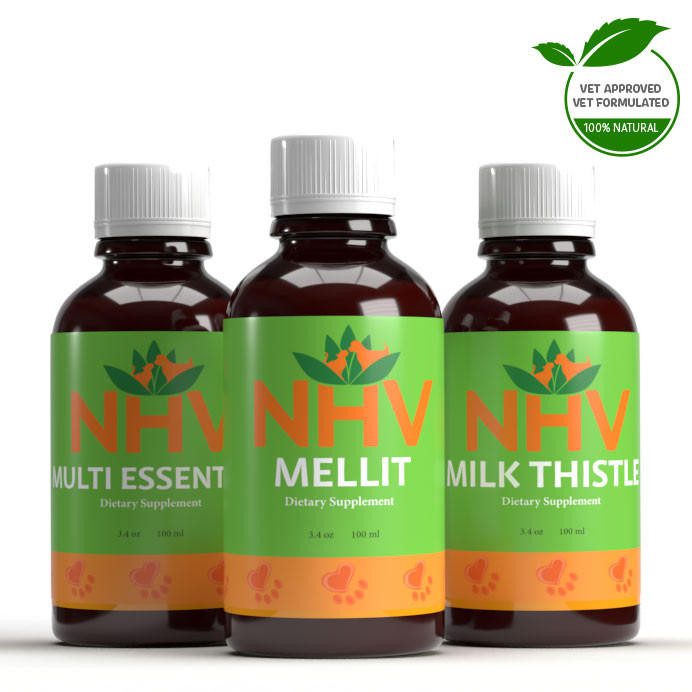
Mellit, Milk Thistle & Multi Essentials
bundle and save with pet expert kits
3 month supply for a small to medium size pet.
Combat Diabetes in your pet with all-natural supplements formulated to ease symptoms, support your pet's recovery and improve their overall health. The Diabetes Kit with Metabolism Support contains NHV Multi Essentials, a complex formula that helps your pet's metabolism, while providing nourishment with plant derived vitamins and minerals.


Combat Diabetes in your pet with all-natural supplements formulated to ease symptoms, support your pet's recovery and improve their overall health. The Diabetes Kit with Metabolism Support contains NHV Multi Essentials, a complex formula that helps your pet's metabolism, while providing nourishment with plant derived vitamins and minerals.

To be taken twice daily. Determine your pet’s weight and then use the easy chart below to determine the correct dose. This is the minimum dosage.
Pet's Weight Dosage
0 - 15 lb = 0.5 ml
16 - 30 lb = 1.0 ml
31 - 45 lb = 1.5 ml
46 - 60 lb = 2.0 ml
61 - 75 lb = 2.5 ml
Over 75 lb = 3.0 ml
How to Administer
Shake well before use. The easiest method is to use the dropper provided and place the drops into your pet’s food or favorite treat. You can also use the dropper and squirt directly into the pet’s mouth. Some pets can be finicky, if this occurs consider hiding the drops in foods most pet’s love such as fish, chicken or yogurt or a favorite treat. If your pet only eats dry food then soak a few kibbles at feeding time.
For Best Results
Herbal dietary supplements are beneficial to the health and well-being of your pet and are safe for long-term use. Every pet responds to natural herbal supplements differently, therefore it is important to be consistent and administer the product daily. Supplements generally take two to four weeks to take effect, however this will vary from one animal to the next.
Product Storage
All NHV Natural Pet Products are pure herbal extracts and contain no artificial additives, preservatives or coloring. Shelf life after opening is 6 months and must be refrigerated after opening.
All information provided by NHV Natural Pet Products is for educational purposes only.
Select your pet's weight to determine the correct dose.
With aging, metabolism becomes slower over time. Pets are considered senior at 7 to 9 years of age. This is usually when we would expect to see some degree of changes, though this can vary greatly.
The Multi Essentials in this kit may help to stimulate metabolic function.
Mellit is our main diabetes support supplement.
Our supplements may help the body to regulate enough to discontinue insulin. However, this should only be done with strict monitoring and instructions from your veterinarian. Taking a pet off of insulin without veterinary advice may be life threatening if not done properly.
To be taken twice daily. Determine your pet’s weight and then use the easy chart below to determine the correct dose. This is the minimum dosage.
Pet's Weight Dosage
0 - 15 lb = 0.5 ml
16 - 30 lb = 1.0 ml
31 - 45 lb = 1.5 ml
46 - 60 lb = 2.0 ml
61 - 75 lb = 2.5 ml
Over 75 lb = 3.0 ml
How to Administer
Shake well before use. The easiest method is to use the dropper provided and place the drops into your pet’s food or favorite treat. You can also use the dropper and squirt directly into the pet’s mouth. Some pets can be finicky, if this occurs consider hiding the drops in foods most pet’s love such as fish, chicken or yogurt or a favorite treat. If your pet only eats dry food then soak a few kibbles at feeding time.
For Best Results
Herbal dietary supplements are beneficial to the health and well-being of your pet and are safe for long-term use. Every pet responds to natural herbal supplements differently, therefore it is important to be consistent and administer the product daily. Supplements generally take two to four weeks to take effect, however this will vary from one animal to the next.
Product Storage
All NHV Natural Pet Products are pure herbal extracts and contain no artificial additives, preservatives or coloring. Shelf life after opening is 6 months and must be refrigerated after opening.
All information provided by NHV Natural Pet Products is for educational purposes only.
Select your pet's weight to determine the correct dose.
With aging, metabolism becomes slower over time. Pets are considered senior at 7 to 9 years of age. This is usually when we would expect to see some degree of changes, though this can vary greatly.
The Multi Essentials in this kit may help to stimulate metabolic function.
Mellit is our main diabetes support supplement.
Our supplements may help the body to regulate enough to discontinue insulin. However, this should only be done with strict monitoring and instructions from your veterinarian. Taking a pet off of insulin without veterinary advice may be life threatening if not done properly.
diabetes support

Mellit, Milk Thistle & Yucca
bundle and save with pet expert kits
3 month supply for a small to medium size pet.
Did you know in addition to traditional treatment, you can support diabetes in dogs and cats naturally? NHV’s Diabetes Super Support Gold Kit contains diabetic cat and diabetic dog supplements to help your little one in their battle. All our products are human-grade and safe for long-term use.


Did you know in addition to traditional treatment, you can support diabetes in dogs and cats naturally? NHV’s Diabetes Super Support Gold Kit contains diabetic cat and diabetic dog supplements to help your little one in their battle. All our products are human-grade and safe for long-term use.

Knowing your precious little one has diabetes is worrying. But with early treatment, a customized diet plan, and the right supplements, the condition is manageable. Our Diabetes Super Support Gold Kit can help ease symptoms of diabetes in dogs and cats, manage blood sugar levels, and protect other organs affected by the disease. This bundle contains our primary support for diabetes in cats and dogs – Mellit, as well as two additional supplements to help support the body: Milk Thistle & Yucca.
Keep reading to find out how they may help!
None of our supplements have any added preservatives, additives, flavorings, or artificial colors. They are all made with organically grown and ethically harvested (or ethically sourced) herbs, and are vet formulated, so you know your furbaby is getting the very best.
What is Diabetes in Cats and Dogs?
Like us, our furriends need glucose, a type of sugar, to fuel their bodies. Diabetes happens when the body cannot correctly turn glucose in the blood into energy that can be used. Glucose is also stuck in furkiddos’ bloodstream and accumulates. This unusual blood chemistry eventually leads to poison in the system, causing further damage and health problems.
Symptoms of Diabetes in Dogs and Cats
You may be wondering if there is any way you can tell if your furkid has diabetes.
Here are some general symptoms you may want to look out for:
Left untreated, the condition will escalate. So if you notice any of the above signs in your little one, you should take them to see a vet as soon as possible.
How NHV Remedies Support Diabetes in Dogs and Cats
Our Diabetes Super Support Gold Kit can support your little one in conjunction with traditional medicine.
Mellit is our fundamental support for diabetes in cats and dogs. As diabetes spikes up the blood sugar and blood pressure of your little one, herbs like Jambolan and Astragalus may help regulate them. The hypoglycemic (low blood sugar) activity in Devil’s club may also help balance the blood sugar. This herb also helps with balancing the metabolism of your little one.
Dandelion, on the other hand, is an anti-inflammatory tonic that may help protect the kidneys from the damage of diabetes. Diabetes can cause cataracts and urinary infections; blueberry helps prevent that. On top of that, the formulation may help with overall vitality.
Besides cataracts and urinary infections, diabetes can also lead to liver issues and kidney failure. Milk Thistle may improve liver and kidney function and support liver regeneration.
In addition, the formulation is well known for its use in treating liver disease because studies have shown its possible benefits in decreasing or reversing damage to the liver. This herb's main compound, Silymarin, may even help remove the toxins in the liver and other organs.
The last supplement included in this bundle is Yucca, which helps with discomfort management. The herbal extract is highly nutritious as it contains vitamin C, beta-carotene, B vitamins, magnesium, iron, calcium, manganese, protein, niacin, and phosphorus. It may also help reduce the inflammation caused by diabetes.
Natural Support for Diabetes in Dogs and Cats
Many pawrents may be worried about getting your little ones to take the supplements. But this would not be a problem with our products as they are liquid-based and palatable. So even finicky furkids may like the taste of our supplements. Even if they are incredibly picky eaters, you can easily hide the extract in their meals or simply drop the appropriate dosage in their cheek pockets.
NHV’s supplements are also all manufactured in a GMP-certified and FDA-approved facility – completely safe for pets.
It is never easy to cope with diabetes in dogs and cats. NHV is with you and your furkiddo every step of the way. Don’t hesitate to contact one of our Pet Experts whenever you need!
Try our Diabetes Super Support Gold Kit now to support your precious little one!
All NHV supplements are made with the finest quality organic or ethically harvested herbs. We use non-GMO vegetable glycerin as our base. NHV products are full-spectrum extracts.
Select your pet's weight to determine the correct dose.
To be taken twice daily. Determine your pet’s weight and then use the easy chart below to determine the correct dose. This is the minimum dosage.
Pet's Weight Dosage
0 - 15 lb = 0.5 ml
16 - 30 lb = 1.0 ml
31 - 45 lb = 1.5 ml
46 - 60 lb = 2.0 ml
61 - 75 lb = 2.5 ml
Over 75 lb = 3.0 ml
How to Administer
Shake well before use. The easiest method is to use the dropper provided and place the drops into your pet’s food or favorite treat. You can also use the dropper and squirt directly into the pet’s mouth. Some pets can be finicky, if this occurs consider hiding the drops in foods most pet’s love such as fish, chicken or yogurt or a favorite treat. If your pet only eats dry food then soak a few kibbles at feeding time.
For Best Results
Herbal dietary supplements are beneficial to the health and well-being of your pet and are safe for long-term use. Every pet responds to natural herbal supplements differently, therefore it is important to be consistent and administer the product daily. Supplements generally take two to four weeks to take effect, however this will vary from one animal to the next.
Product Storage
All NHV Natural Pet Products are pure herbal extracts and contain no artificial additives, preservatives or coloring. Shelf life after opening is 6 months and must be refrigerated after opening.
All information provided by NHV Natural Pet Products is for educational purposes only.
Knowing your precious little one has diabetes is worrying. But with early treatment, a customized diet plan, and the right supplements, the condition is manageable. Our Diabetes Super Support Gold Kit can help ease symptoms of diabetes in dogs and cats, manage blood sugar levels, and protect other organs affected by the disease. This bundle contains our primary support for diabetes in cats and dogs – Mellit, as well as two additional supplements to help support the body: Milk Thistle & Yucca.
Keep reading to find out how they may help!
None of our supplements have any added preservatives, additives, flavorings, or artificial colors. They are all made with organically grown and ethically harvested (or ethically sourced) herbs, and are vet formulated, so you know your furbaby is getting the very best.
What is Diabetes in Cats and Dogs?
Like us, our furriends need glucose, a type of sugar, to fuel their bodies. Diabetes happens when the body cannot correctly turn glucose in the blood into energy that can be used. Glucose is also stuck in furkiddos’ bloodstream and accumulates. This unusual blood chemistry eventually leads to poison in the system, causing further damage and health problems.
Symptoms of Diabetes in Dogs and Cats
You may be wondering if there is any way you can tell if your furkid has diabetes.
Here are some general symptoms you may want to look out for:
Left untreated, the condition will escalate. So if you notice any of the above signs in your little one, you should take them to see a vet as soon as possible.
How NHV Remedies Support Diabetes in Dogs and Cats
Our Diabetes Super Support Gold Kit can support your little one in conjunction with traditional medicine.
Mellit is our fundamental support for diabetes in cats and dogs. As diabetes spikes up the blood sugar and blood pressure of your little one, herbs like Jambolan and Astragalus may help regulate them. The hypoglycemic (low blood sugar) activity in Devil’s club may also help balance the blood sugar. This herb also helps with balancing the metabolism of your little one.
Dandelion, on the other hand, is an anti-inflammatory tonic that may help protect the kidneys from the damage of diabetes. Diabetes can cause cataracts and urinary infections; blueberry helps prevent that. On top of that, the formulation may help with overall vitality.
Besides cataracts and urinary infections, diabetes can also lead to liver issues and kidney failure. Milk Thistle may improve liver and kidney function and support liver regeneration.
In addition, the formulation is well known for its use in treating liver disease because studies have shown its possible benefits in decreasing or reversing damage to the liver. This herb's main compound, Silymarin, may even help remove the toxins in the liver and other organs.
The last supplement included in this bundle is Yucca, which helps with discomfort management. The herbal extract is highly nutritious as it contains vitamin C, beta-carotene, B vitamins, magnesium, iron, calcium, manganese, protein, niacin, and phosphorus. It may also help reduce the inflammation caused by diabetes.
Natural Support for Diabetes in Dogs and Cats
Many pawrents may be worried about getting your little ones to take the supplements. But this would not be a problem with our products as they are liquid-based and palatable. So even finicky furkids may like the taste of our supplements. Even if they are incredibly picky eaters, you can easily hide the extract in their meals or simply drop the appropriate dosage in their cheek pockets.
NHV’s supplements are also all manufactured in a GMP-certified and FDA-approved facility – completely safe for pets.
It is never easy to cope with diabetes in dogs and cats. NHV is with you and your furkiddo every step of the way. Don’t hesitate to contact one of our Pet Experts whenever you need!
Try our Diabetes Super Support Gold Kit now to support your precious little one!
All NHV supplements are made with the finest quality organic or ethically harvested herbs. We use non-GMO vegetable glycerin as our base. NHV products are full-spectrum extracts.
Select your pet's weight to determine the correct dose.
To be taken twice daily. Determine your pet’s weight and then use the easy chart below to determine the correct dose. This is the minimum dosage.
Pet's Weight Dosage
0 - 15 lb = 0.5 ml
16 - 30 lb = 1.0 ml
31 - 45 lb = 1.5 ml
46 - 60 lb = 2.0 ml
61 - 75 lb = 2.5 ml
Over 75 lb = 3.0 ml
How to Administer
Shake well before use. The easiest method is to use the dropper provided and place the drops into your pet’s food or favorite treat. You can also use the dropper and squirt directly into the pet’s mouth. Some pets can be finicky, if this occurs consider hiding the drops in foods most pet’s love such as fish, chicken or yogurt or a favorite treat. If your pet only eats dry food then soak a few kibbles at feeding time.
For Best Results
Herbal dietary supplements are beneficial to the health and well-being of your pet and are safe for long-term use. Every pet responds to natural herbal supplements differently, therefore it is important to be consistent and administer the product daily. Supplements generally take two to four weeks to take effect, however this will vary from one animal to the next.
Product Storage
All NHV Natural Pet Products are pure herbal extracts and contain no artificial additives, preservatives or coloring. Shelf life after opening is 6 months and must be refrigerated after opening.
All information provided by NHV Natural Pet Products is for educational purposes only.
Published: September 14, 2018